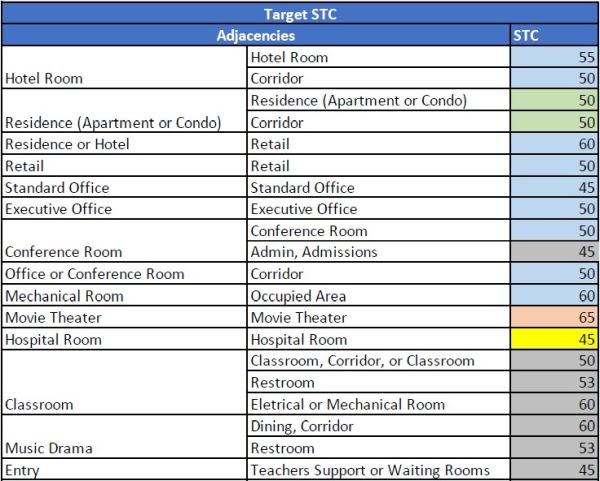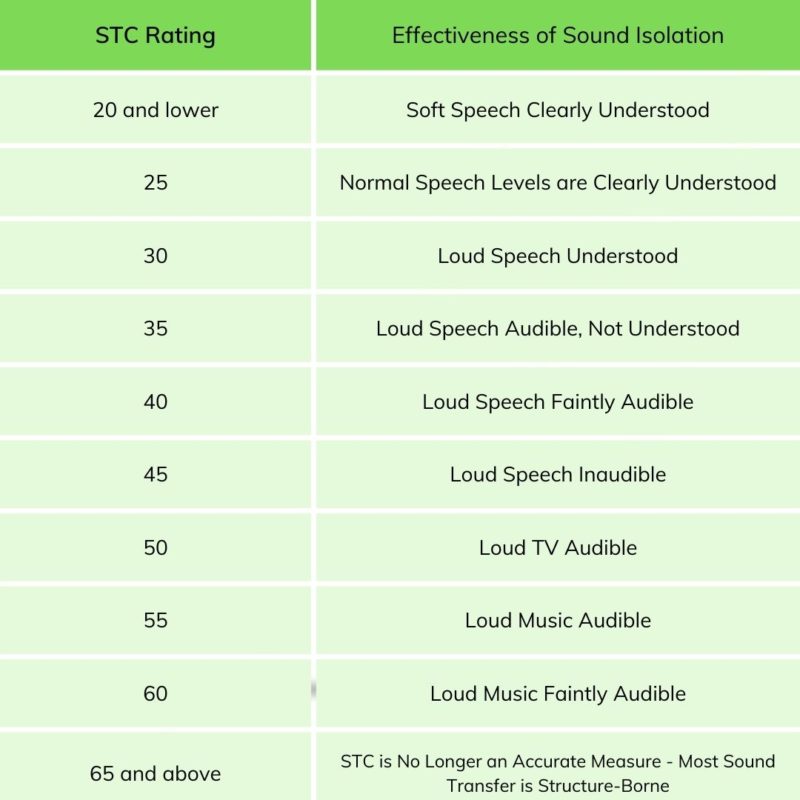Target STCs
Determine Target STCs – Sound Transmission Class Ratings
Determining target STCs is one of the first acoustical analyses an architect or consultant should perform when designing a new structure. Since the cost of construction often increases with the level of STC desired, it’s important to determine an acceptable STC without over-defining the requirements. While Commercial Acoustics spends much effort helping architects and developers get to their STC targets, we also pride ourselves in helping them find the ideal target for their development which can be reached in a cost-effective manner.
Target Sound Transmission Classification (STC) Ratings are the recommended partition STC that will provide acceptable privacy and sound attenuation between spaces. The target ratings are dependent on the adjacency and occupancy class on each side of the wall – a band room may not need a high STC wall if placed next to a storage room, but will need one if placed next to a classroom.

Common STC Ratings
When building condos and apartments, you must achieve an STC 50 for the unit demising and corridor walls per the International Building Code. Most other occupancies do not have code requirements, but there is a commercially reasonable expectation of speech privacy between adjacent units.
At STC 65 and above, careful attention should be paid to 63Hz and 80Hz frequency bands (thuds, bangs, bass, drums). These two frequency bands are actually not considered in the STC determination. Since low-‐frequency sound is much more difficult block, often-‐times only sounds below 100Hz will leak into adjacent auditoriums and studios with STC 65+ partitions.

Recommended STC Ratings on Corridor & Demising Walls
As discussed above, building code requires STC 50 for corridor and demising walls when building apartments and condos. However, when building hotels, the STC of 55 for demising walls and STC 50 for corridor walls isn’t a building code requirement – this is what we call a “brand standard”. Brand standard STC ratings are based on what’s expected or recommended by the hotel brand.
For example, when staying in a high end hotel, such as a Ritz Carlton, guests expect not to be disturbed by guests in adjacent rooms or in the hallways. But, if you’re making a convenience stop on a road trip, and end up in a motel, you wouldn’t expect that same level of privacy.
References:
